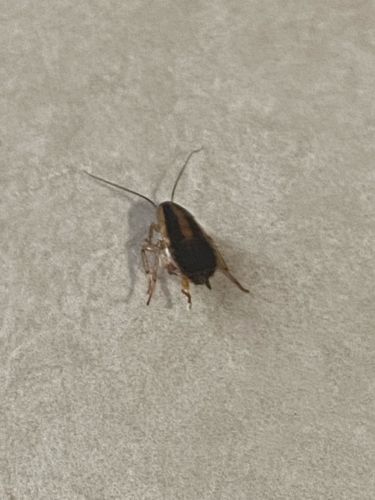German Cockroach
Scientific Name: Blattella germanica
Order & Family: Order: Blattodea, Family: Ectobiidae
Size: 1.1 to 1.6 cm (0.43 to 0.63 inches) in length

Natural Habitat
Prefer warm, humid environments, commonly found indoors in kitchens, bathrooms, and other areas where food and moisture are readily available. They hide in cracks, crevices, behind appliances, and inside walls.
Diet & Feeding
Omnivorous scavengers; they consume almost anything, including food scraps, grease, starches, sweets, meats, and even non-food items like soap, glue, and toothpaste.
Behavior Patterns
Nocturnal; they are most active at night, foraging for food and water. They are known for their rapid movimientos and ability to hide in small crevices. They reproduce quickly, with females laying egg cases (oothecae) containing multiple eggs. They can infest a new area rapidly.
Risks & Benefits
Risks: German cockroaches are significant pests. They can transmit bacteria and pathogens, contaminate food, trigger allergies and asthma attacks, and create an unhygienic environment. They are not known to have direct benefits to ecosystems in human-dominated environments. Benefits: In natural environments, cockroaches can act as decomposers, breaking down organic matter.
Identified on: 8/20/2025